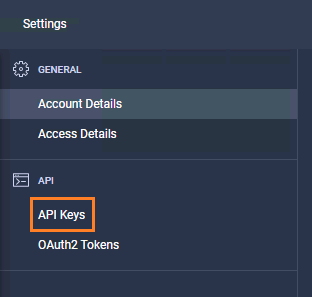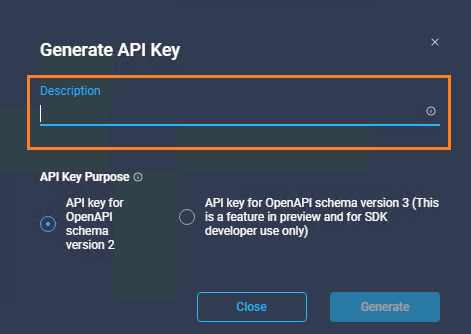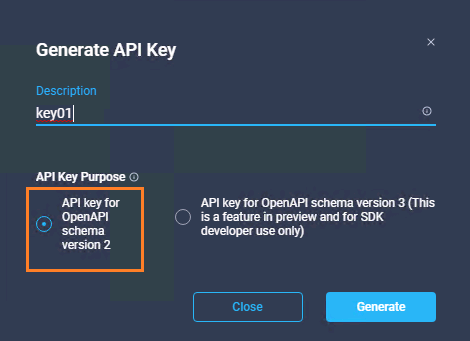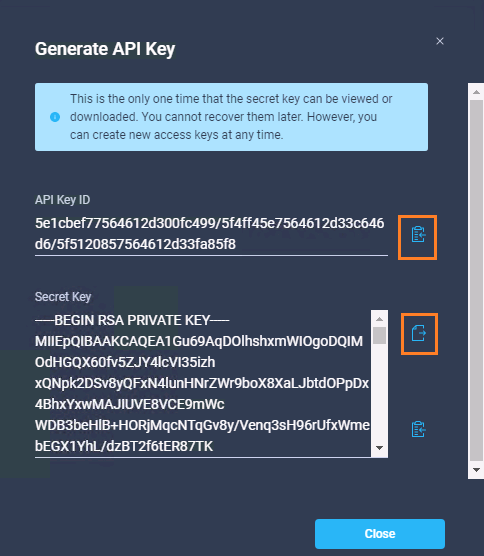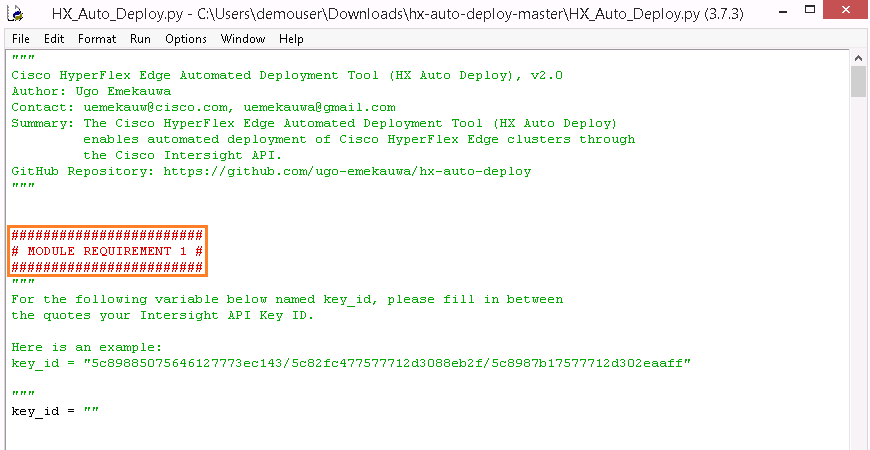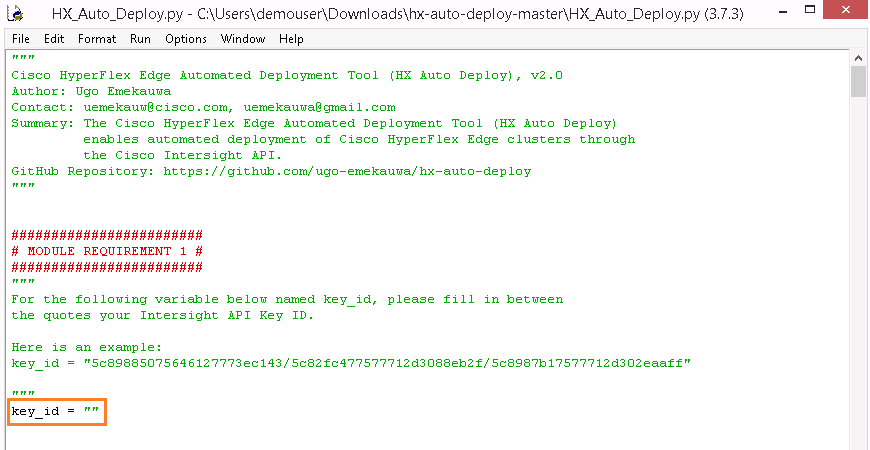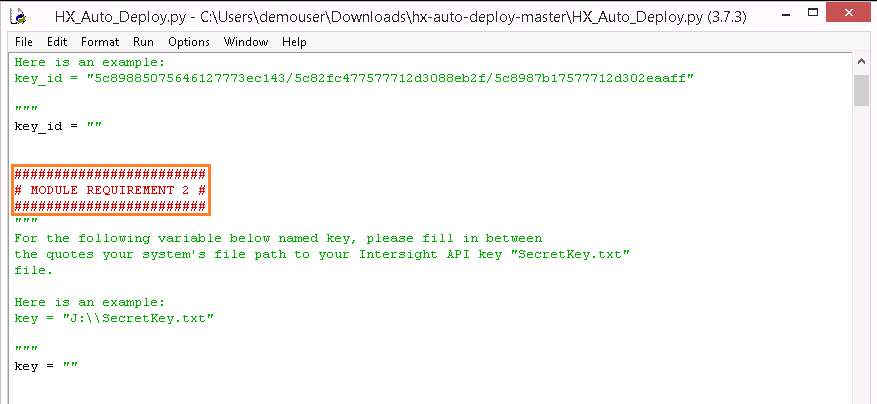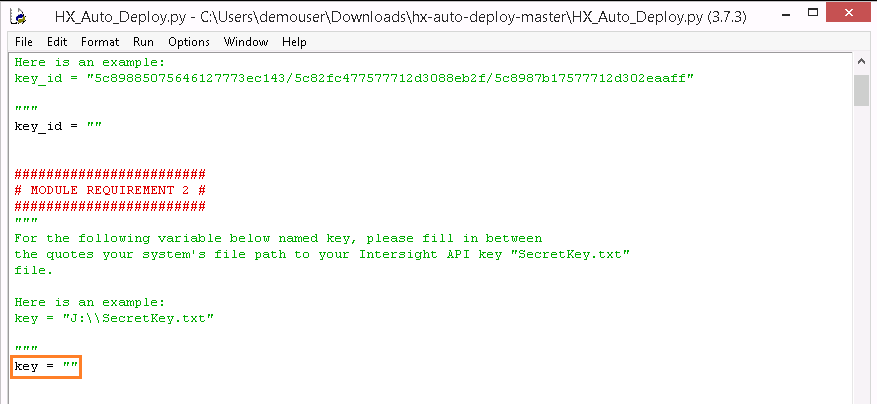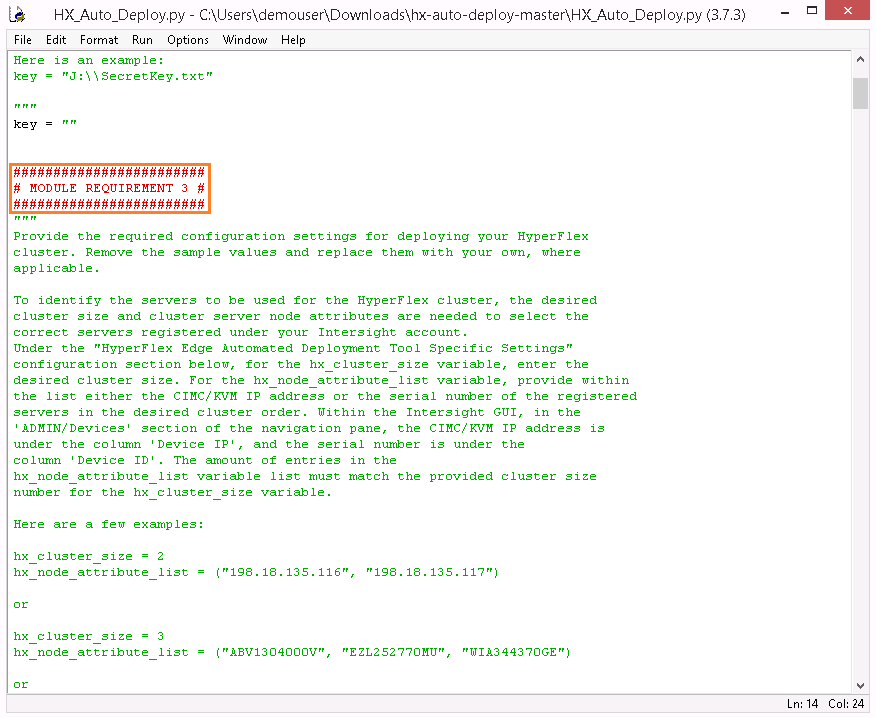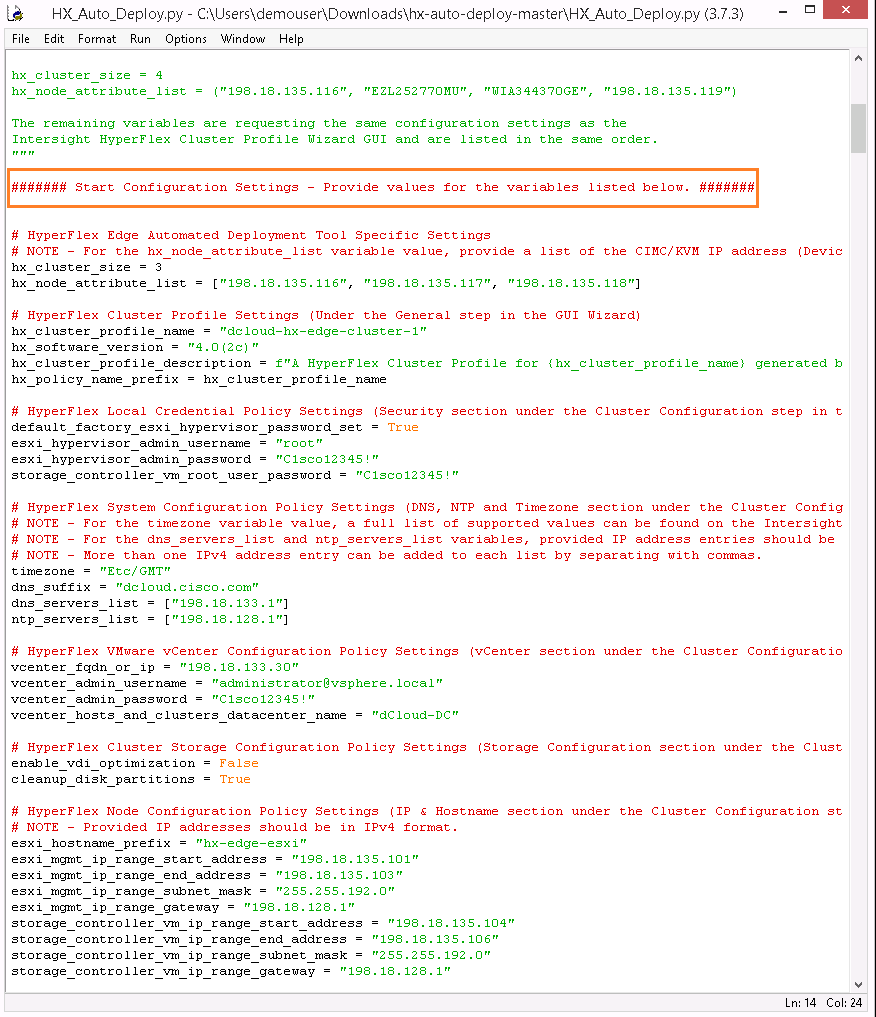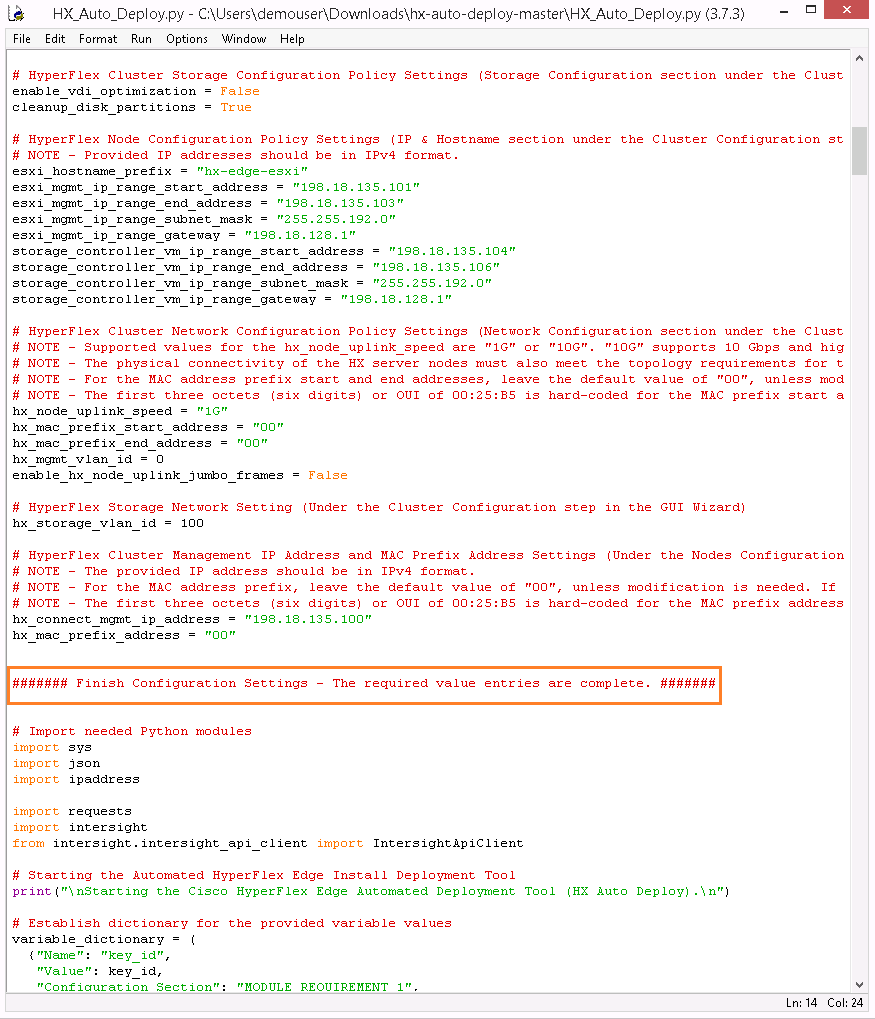The Cisco HyperFlex Edge Automated Deployment Tool (HX Auto Deploy) for Cisco Intersight enables automated deployment of HyperFlex Edge cluster installations through the Intersight API.
The HX Auto Deploy Tool, which was originally built for Cisco dCloud, has been re-designed and upgraded to work in any environment due to popular demand. Here are a few of the new features:
- Easily modifiable variable values for use in any environment.
- Built-in HyperFlex policy creation and configuration on Intersight. No more dependencies on other scripts.
- Dynamic support for all HyperFlex Edge cluster sizes on Intersight.
- Advanced error-checking for HyperFlex configuration requirements similar to the Intersight GUI, in order to avoid unnecessary troubleshooting.
-
Python 3 installed, which can be downloaded from https://www.python.org/downloads/.
-
Install the Cisco Intersight SDK for Python by running the following command:
python -m pip install git+https://github.com/CiscoUcs/intersight-python.gitMore information on the Cisco Intersight SDK for Python can be found at https://github.com/CiscoUcs/intersight-python.
-
[Optional] If you already have the Cisco Intersight SDK for Python installed, you may need to upgrade. An upgrade can be performed by running the following command:
python -m pip install git+https://github.com/CiscoUcs/intersight-python.git --upgrade --user -
Clone or download the HyperFlex Edge Automated Deployment Tool for Cisco Intersight repository by using the
 link on the main repository web page or by running the following command:
link on the main repository web page or by running the following command:git clone https://github.com/ugo-emekauwa/hx-auto-deploy -
Generate a version 2 API key from your Intersight account.
(a). Log into your Intersight account, click the Settings icon and select Settings.
(b). Under the API section in the work pane, click API Keys.
(c). In the API Keys section in the work pane, click the Generate API Key button.
(d). In the Generate API Key window, enter a description or name for your API key.
(e). In the Generate API Key window, under API Key Purpose, verify a version 2 API key is selected.
(f). In the Generate API Key window, click the Generate button.
(g). In the Generate API Key window, a new API key will be generated. Copy the API Key ID and download the Secret Key to a secure location.
-
Gather the CIMC/KVM IP address or serial number of the servers registered with Intersight that you plan on using in your HyperFlex Edge cluster. You can login to the Intersight GUI and find this information in the ADMIN/Devices section under the Device IP and Device ID columns. HyperFlex Edge with Intersight currently supports 2, 3 or 4 server node clusters.

-
Please ensure that the above Prerequisites have been met.
-
Edit the HX_Auto_Deploy.py file to set the
key_idvariable using the following instructions:(a). Open the HX_Auto_Deploy.py file in an IDLE or text editor of choice.
(b). Find the comment
# MODULE REQUIREMENT 1 #.(c). Underneath, you will find the variable
key_id. The variable is currently empty.(d). Fill in between the quotes of the
key_idvariable value with the ID of your API key. For example:key_id = "5c89885075646127773ec143/5c82fc477577712d3088eb2f/5c8987b17577712d302eaaff"
-
Edit the HX_Auto_Deploy.py file to set the
keyvariable using the following instructions:(a). Open the HX_Auto_Deploy.py file in an IDLE or text editor of choice.
(b). Find the comment
# MODULE REQUIREMENT 2 #.(c). Underneath, you will find the variable
key. The variable is currently empty.(d). Fill in between the quotes of the
keyvariable value with your system's file path to the SecretKey.txt file for your API key. For example:key = "C:\\Keys\\Key1\\SecretKey.txt"
-
Edit the HX_Auto_Deploy.py file to set all the HyperFlex configuration variable values using the following instructions:
(a). Open the HX_Auto_Deploy.py file in an IDLE or text editor of choice.
(b). Find the comment
# MODULE REQUIREMENT 3 #.(c). Underneath, you will find the instructions to edit the HyperFlex configuration variable values to match your environment. Each variable has a sample value for ease of use. The variable values to edit begin under the comment
####### Start Configuration Settings - Provide values for the variables listed below. #######.Completion of editing the HyperFlex configuration variable values is marked by the comment
####### Finish Configuration Settings - The required value entries are complete. #######. -
Save the changes you have made to the HX_Auto_Deploy.py file.
-
Run the HX_Auto_Deploy.py file. Upon a successful deployment, the HX Auto Deploy Tool will inform you that your new HyperFlex cluster profile has been deployed.
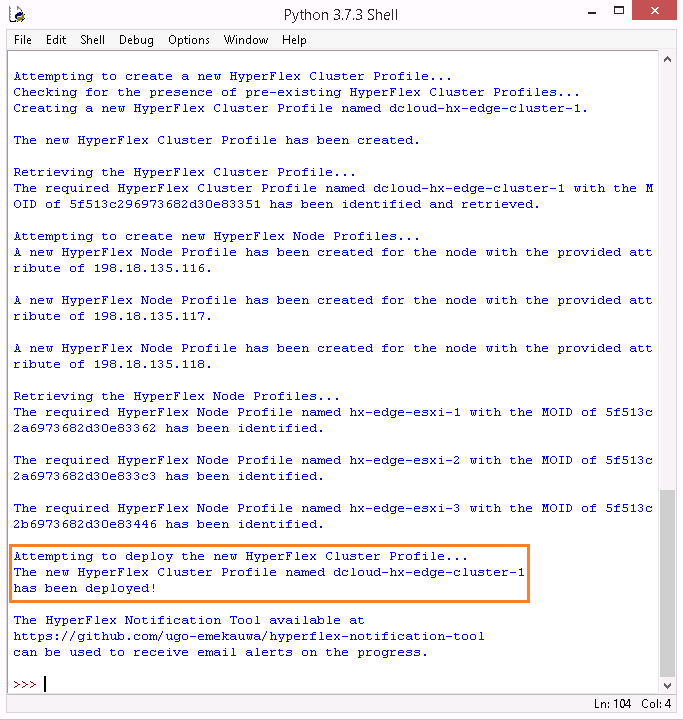
-
Once the HX Auto Deploy Tool has completed running, you can login to the Intersight GUI to see the HyperFlex Edge cluster profile created and in a state of deployment in the CONFIGURE/Profiles section.

The HyperFlex Notification Tool available on GitHub at https://github.com/ugo-emekauwa/hyperflex-notification-tool can be used to receive automated updates on the status of the HyperFlex Edge deployment.
The HyperFlex Edge Automated Deployment Tool for Cisco Intersight is featured on Cisco dCloud in the following labs:
- Cisco HyperFlex Edge 4.0 with Intersight v1 (All Flash, 2-Node) - See Scenario 3.
- Cisco HyperFlex Edge 4.0 with Intersight v1 (Hybrid, 2-Node) - See Scenario 3.
dCloud is available at https://dcloud.cisco.com, where Cisco product demonstrations and labs can be found in the Catalog.
Here are similar tools to help administer and manage Cisco HyperFlex environments.
Ugo Emekauwa


